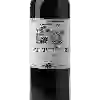
Domaine du Pressoir FleuriBeaujolais Blanc
In the mouth this white wine is a .
This wine generally goes well with pork, vegetarian or poultry.
Taste structure of the Beaujolais Blanc from the Domaine du Pressoir Fleuri
Light | Bold | |
Dry | Sweet | |
Soft | Acidic |
In the mouth the Beaujolais Blanc of Domaine du Pressoir Fleuri in the region of Beaujolais is a .
Food and wine pairings with Beaujolais Blanc
Pairings that work perfectly with Beaujolais Blanc
Original food and wine pairings with Beaujolais Blanc
The Beaujolais Blanc of Domaine du Pressoir Fleuri matches generally quite well with dishes of rich fish (salmon, tuna etc), shellfish or poultry such as recipes of gravelax salmon, giant paella cooked on a wood fire or chicken curry (like in reunion island).
Details and technical informations about Domaine du Pressoir Fleuri's Beaujolais Blanc.
Discover the grape variety: Chardonnay
The white Chardonnay is a grape variety that originated in France (Burgundy). It produces a variety of grape specially used for wine making. It is rare to find this grape to eat on our tables. This variety of grape is characterized by small bunches, and small grapes. White Chardonnay can be found in many vineyards: South West, Burgundy, Jura, Languedoc & Roussillon, Cognac, Bordeaux, Beaujolais, Savoie & Bugey, Loire Valley, Champagne, Rhone Valley, Armagnac, Lorraine, Alsace, Provence & Corsica.
Informations about the Domaine du Pressoir Fleuri
The Domaine du Pressoir Fleuri is one of of the world's greatest estates. It offers 13 wines for sale in the of Beaujolais to come and discover on site or to buy online.
The wine region of Beaujolais
Beaujolais is an important wine region in eastern France, famous for its vibrant, Fruity red wines made from Gamay. It is located immediately South of Burgundy, of which it is sometimes considered a Part, although it is in the administrative region of Rhône. The extensive plantings of Gamay in this region make Beaujolais one of the few regions in the world that is so concentrated on a single Grape variety. Pinot Noir is used in small quantities in red and rosé wines, but in the name of regional identity, it is being phased out and will only be allowed until the 2015 harvest.
News related to this wine
The Morey Saint Denis appellation investigated through its geology and geography
The Bourgogne Wine Board (BIVB) invites you to enjoy this video in which Jean-Pierre Renard, Expert Instructor at the Ecole des Vins de Bourgogne, explains the topographical and geological characteristics of the Morey-Saint-Denis appellation. The vineyard lies on an intensely fractured area. Several characteristic zones can be distinguished, we can say that each Climat has its own personality. This video is taken from the “Rendez-vous avec les vins de Bourgogne” program broadcasted in April 2021 ...
At the heart of the terroirs of Mâcon-Prissé
Sequence from the video « At the heart of the Mâcon terroir » which offer a stroll at the heart of the Mâcon terroir. It offers a focus on Mâcon-Prissé, one of the 27 geographical denominations of the Mâcon appellation. Travel through the terroirs of the Mâcon appellation by watching the full video : https://www.youtube.com/watch?v=GF20y1aBZh8 Both are available in French and English. Our social media: Facebook: https://www.facebook.com/BourgogneWines Twitter: https://twitter.com/BourgogneWine ...
An overview of the Rully appellation
The Bourgogne Wine Board (BIVB) invites you to a survey above the vineyard of Rully. Situated at the end of the Côte de Beaune region, it marks the begining of the côte chalonnaise with such a diversity of landscapes. Our social media: Facebook: https://www.facebook.com/BourgogneWines Twitter: https://twitter.com/BourgogneWines/ Instagram: https://www.instagram.com/vinsdebourgogne/ LinkedIn: https://www.linkedin.com/company/bivb Find out more on our website: https://www.bourgogne-wines ...
The word of the wine: Oxidative (breeding)
A method of ageing which aims to give the wine certain aromas of evolution (dried fruit, bitter orange, coffee, rancio, etc.) by exposing it to the air; it is then matured either in barrels, demi-muids or unoaked casks, sometimes stored in the open air, or in barrels exposed to the sun and to temperature variations. This type of maturation characterizes certain natural sweet wines, ports and other liqueur wines.














